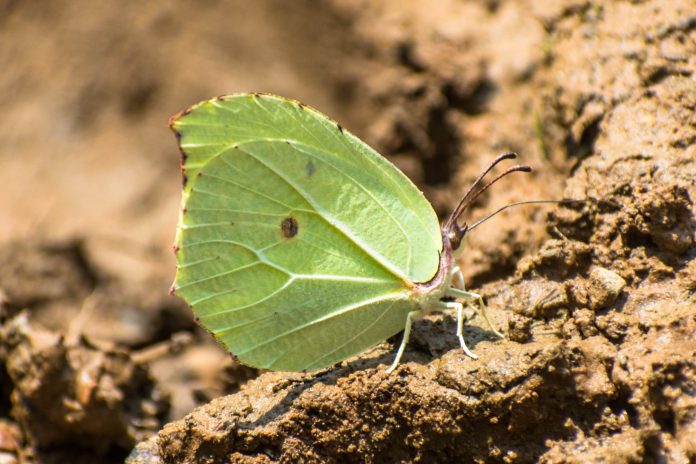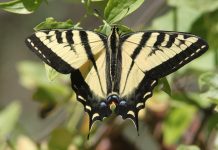Gonepteryx rhamni (common brimstone) is a butterfly of the family Pieridae. The common brimstone can be commonly found throughout the Palearctic. Individuals have been seen from Western Europe to East Asia.
Food Plants
The alder buckthorn (Rhamnus frangula) and the common buckthorn (Rhamnus carthartica) are the two plant sources which are larval brimstones feed on. The larval forms specialized for particular host plants. Although, adult brimstones are not specialized nectar feeders, heavily feeds on the nectar of several flowering species: Succisa pratensis, Centaurea jacea, and Knautia arvensis. For the habitat selection, Adult food plant availability is one of the important factors. Also feeding on the nectar of Tussilago farfarain April and May as observed.
Life Cycle
Life expectancy of the common brimstone is ranging from 10 months to a year, becoming one of the longest living butterflies. Their life cycle is approximately 50 days, from the laid egg to the emergence of the imago.
Egg – on the underside of buckthorn leaves, adult common brimstones are lay eggs singly. The eggs are around 1.3 mm tall, spindle-shaped in appearance. The eggs change color over time. The common brimstone is univoltine (lays one generation of eggs each year).
Caterpillar – have a green colorations with white hairs and dark tubercules across its length. They move to the upper side of the leaves and eat, when they first hatch happened. Characteristic hole patterns leaving in their host plants.
Pupa – Approximately two weeks elapse to Pupation. 22.2-23.8 mm in length and similar to the curled leaf by appearance. The pupae have a primarily green colorations. Although, the wing areas turn in to yellow, right before the adult emergence for males.
Adult – Males and females have pink head and antennae, orange spots in the discoidal cell of each wing and a thorax covered in white hair. The wing coloration of males is sulphur yellow and females is greenish-white. Common brimstone has sexual dichromism, with males and females. They emerge during the summer (June to August) and continue to feed until September, hibernates for the next seven months of winter. Remaining inactive until April, where they then emerge and proceed to reproduce and lay eggs.
Habitat and Distribution
The common brimstone uses various environments for different stages of its life cycle. Due to an abundance of host plants like the alder buckthorn for oviposition, the butterfly inhabits wetlands during mating and breeding season. Adult brimstones travel to woodlands during the winter season, to hibernate. After the common brimstone emerges from hibernation, it travels towards the mates and habitats of larval host plants.
Migration
The environmental conditions of a particular year also affect migration. Between the hibernation and breeding areas, common brimstone undergoes some regional migration throughout the year, as seen in the different chemical composition of butterflies across varying seasons and regions.
Behaviors for Protection
Both the larval and adult common brimstone can remain in the open safer, due to exhibit cryptic coloration is difficult to detect. Adult brimstones are leaf-mimics, have similarities in shape, color, and pattern to leaves. When picked up, the butterflies become rigid and hide their legs to be protect.
Conservation states
According to IUCN standards, does not appear to have a threatened conservation status on Gonepteryx rhamni. The butterfly has experienced significant distribution and population reduction in areas such as the Netherlands and it has reached endangered species status. Since the common brimstone is univoltine, it may have difficulties adapting to changing environmental conditions. Decreasing open woodlands, declining nectar supplies, Nitrogen pollution, and rapid ecological changes are the hypothetical factors for decrease in suitable overwintering environments for the butterflies.





























I love your website, and I especially love this articles.